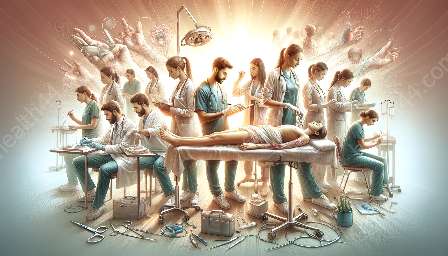Anatomy and physiology are foundational concepts in medical training, providing a deep understanding of the human body's structure and function. These topics form the basis for clinical skills training and health education, as they are essential for providing quality medical care. Let's explore the intricacies of human anatomy and physiology, and their relevance in clinical practice and health education.
The Importance of Anatomy and Physiology in Clinical Skills Training
Before delving into the specific details of anatomy and physiology, it's crucial to understand their significance in the context of clinical skills training. Anatomy provides the structural framework of the human body, including organs, tissues, and cells, while physiology focuses on how these structures function and interact to maintain homeostasis.
For healthcare professionals, a comprehensive understanding of anatomy and physiology is essential for diagnosing and treating patients. Through hands-on training, medical students and practitioners learn to apply their knowledge of the body's structure and function in real-world clinical scenarios. From physical examinations to surgical procedures, a strong foundation in anatomy and physiology is indispensable for delivering effective patient care.
Exploring the Complex Systems of the Human Body
When studying anatomy and physiology, one is confronted with the intricacy and interconnectedness of the body's systems. From the cardiovascular and respiratory systems to the nervous and musculoskeletal systems, each plays a vital role in maintaining bodily functions and overall health.
The Cardiovascular System: This system comprises the heart, blood vessels, and blood, working together to transport oxygen and nutrients throughout the body. Understanding the anatomy of the heart and the physiology of blood circulation is crucial for assessing cardiac health and managing cardiovascular conditions.
The Respiratory System: Responsible for gas exchange and oxygenation, the respiratory system includes the lungs and airways. Healthcare professionals must grasp the anatomy of the respiratory tract and the physiological processes of respiration to diagnose and treat respiratory disorders.
The Nervous System: Encompassing the brain, spinal cord, and nerves, the nervous system controls bodily functions and sensory perception. An in-depth comprehension of neuroanatomy and neurophysiology is essential for assessing neurological conditions and providing appropriate interventions.
The Musculoskeletal System: This system consists of bones, muscles, and joints, facilitating movement and providing structural support. Knowledge of musculoskeletal anatomy and physiology is imperative for evaluating injuries, performing orthopedic interventions, and promoting mobility and function.
Integrating Anatomy and Physiology into Health Education
Health education encompasses a wide range of topics, including disease prevention, lifestyle management, and patient wellness. Anatomy and physiology serve as cornerstones of health education, enabling individuals to understand their bodies and make informed decisions regarding their health.
By incorporating anatomy and physiology into health education curricula, educators empower people to take charge of their well-being. Understanding the body's structure and function promotes healthy behaviors, encourages disease prevention, and enhances individuals' overall health literacy.
Clinical scenarios can be utilized to engage students in practical applications of anatomy and physiology, bridging the gap between theoretical knowledge and real-world healthcare challenges. Through interactive learning experiences, students develop the clinical skills and critical thinking abilities needed to address health-related issues effectively.
Advancing Medical Training through Comprehensive Understanding
As medical training continually evolves, the integration of anatomy and physiology remains paramount. Advancements in medical technology and research underscore the need for healthcare professionals to stay abreast of the latest developments in anatomy and physiology.
By embracing a comprehensive understanding of anatomy and physiology, healthcare practitioners are better equipped to adapt to new diagnostic methods, treatment modalities, and patient care approaches. Continuing medical education programs often emphasize the importance of revisiting fundamental concepts, including anatomy and physiology, to ensure that practitioners maintain high standards of competence and deliver optimal care.
The Interplay of Anatomy, Physiology, and Clinical Practice
From the bedside to the classroom, the interplay of anatomy, physiology, and clinical practice shapes the landscape of healthcare. Knowledge of the human body's intricacies enriches the practice of medicine, allowing healthcare professionals to approach patient care holistically.
Aspiring clinicians and healthcare students are encouraged to delve deep into the intricacies of anatomy and physiology, as these formative subjects lay the groundwork for their future roles in patient care. By embracing the connection between anatomy, physiology, clinical skills, and health education, the healthcare community can collectively work towards enhancing the quality of care and promoting holistic well-being.



